After last week’s break, I am back with my guides about Italy. Today I will take you all back to Sicily, to explore another area with my Trapani, Erice and Segesta Guide. Trapani is my mother’s home town and it is a place I know very well, as I used to spend about 2 months every year in the area. My grandparents used to live in Trapani and I have always loved wandering around the narrow lanes of the older part of town. It is a very pretty town and the sea has always played a major role in the life of its people. Many of them are or were fishermen or sailors and this history is well reflected in the local food as well.
During our trip, we visited Trapani over 2 days. We were staying in the seaside village of San Vito Lo Capo (a guide on that will follow), so we drove there in the morning and left in the evening. As we did not have a lot of time, we only visited the main attractions and showed the girls a few key areas of the city.

Before getting into the details of what to see and do, let me give you a brief historical background, as I think it is fundamental to understand this town better. This is how Wikipedia briefly describes Trapani’s history: “Trapani was founded by the Elymians to serve as the port of the nearby city of Erice (ancient Eryx), which overlooks it from Monte San Giuliano. The city sits on a low-lying promontory jutting out into the Mediterranean Sea. It was originally named Drepana or Drépanon from the Greek word for “sickle”, because of the curving shape of its harbour. Carthage seized control of the city in 260 BC, subsequently making it an important naval base, but ceded it to Rome in 241 BC following the Battle of the Aegates in the First Punic War. […] After the Roman, Vandal, Ostrogoth, Byzantine and (from 827) Arab dominations, Trapani was conquered by the Normans of Roger I in 1077, flourishing under their dominations and having also a role in the Crusades as one of the most important ports in the Mediterranean Sea. […]” See what I mean? All these influences are still visible in the architecture, culture, language and food of the city!
Always according to Wiki, two ancient legends tell of mythical origins for the city: “In the first legend, Trapani stemmed from the sickle which fell from the hands of the goddess Demeter while she was seeking for her daughter Persephone, who had been kidnapped by Hades. The second myth features Saturn, who eviscerated his father Uranus, god of the sky, with a sickle which, falling into the sea, created the city. In ancient times, Saturn was the god-protector of Trapani. Today, Saturn’s statue stands in a piazza in the centre of the city”. Don’t you just love legends and myths?

SIGHTSEEING
TRAPANI
Bordered on both sides by the sea, Trapani is a compact, but beautiful city. The ferry terminal for the beautiful Aegades Islands and almost all of Trapani’s places of interest, such as the Romanesque and Renaissance buildings of the Santuario dell’Annunziata (Sanctuary of Annunziata) in Via Conte Pepoli – the town’s major sight.


And the church of Sant’Agostino (Saint Augustine) in Piazzetta Saturno, all located in the old town.

Visitors and residents alike head here for some superb shopping and restaurants, especially around Corso Vittorio Emanuele, the old town’s pedestrian main street, Cavarretta Palace and the Chiesa del Collegio.

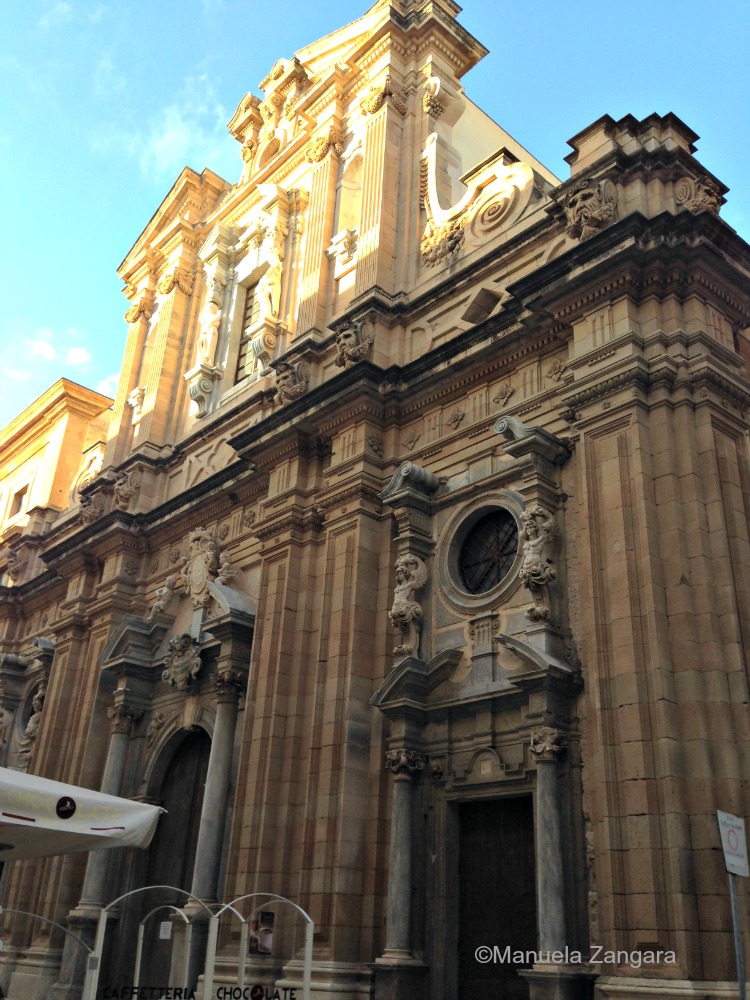
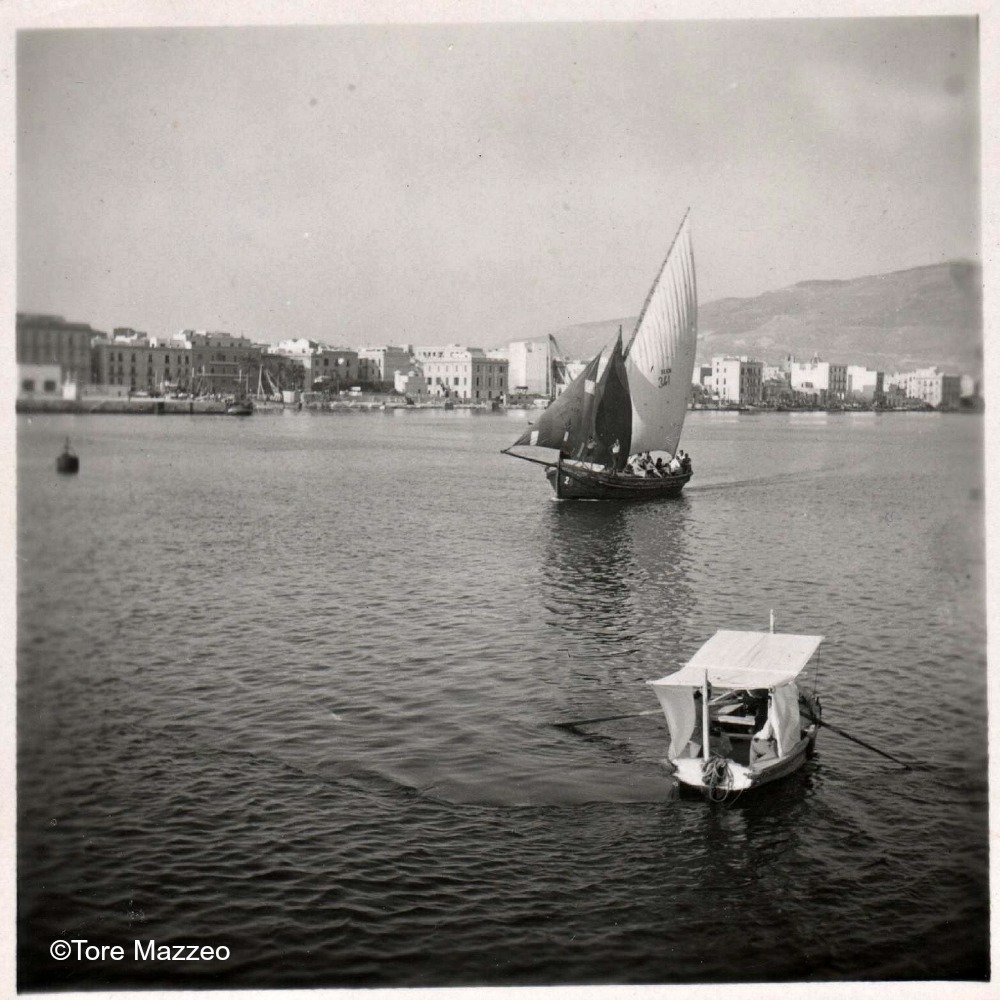

I also love the Piazza del Mercato del Pesce – aka Fish Market Square. The fish market has been moved but the arcades that surround the square are beautiful.



Another place I love is Ligny Tower – a coastal watchtower built between 1671 and 1672 in a strategic position on the city’s western coast. It is the place where you can see the Mediterranean Sea merge with the Tyrrhenian Sea. Today, the tower is in good condition, and it is open to the public as an archaeological museum.

If visiting Trapani over Easter, look out for the Processione dei Misteri (the Procession of the Mysteries), which is held every year on Good Friday, and is known throughout Italy.


SALINE DI NUBIA
We also took the girls to visit the Salt Museum, in Nubia, just outside Trapani. It is a salt pan and mill that informs visitors about the age old Trapani tradition of salt production and refining. Preserved equipment and exhibitions depict how the job was done before the arrival of modern machinery. Attached is a small restaurant that makes use of the salt in its recipes.
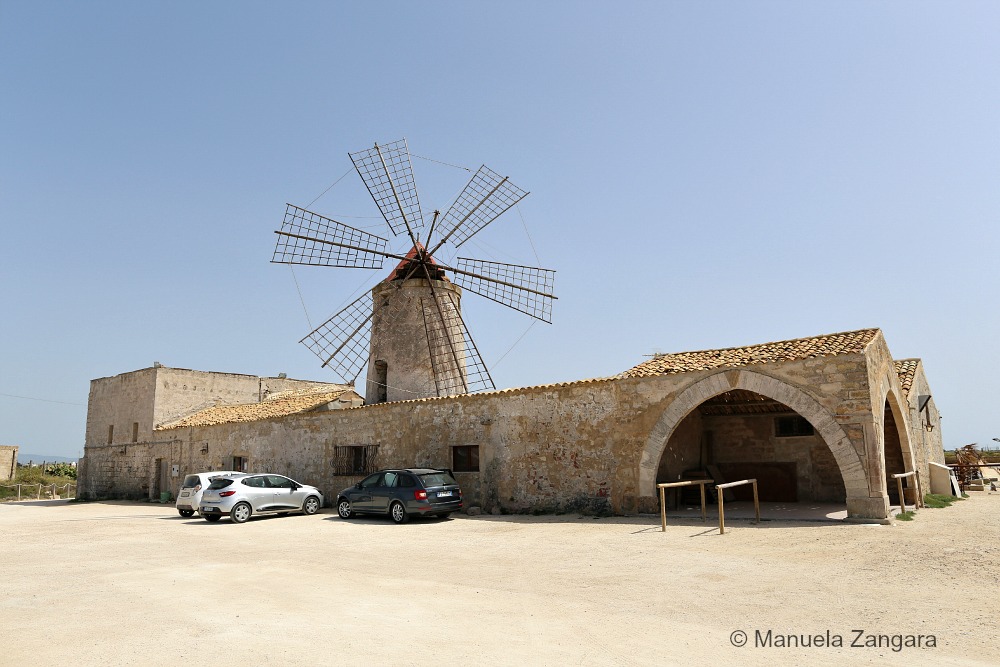

It was very interesting. The area is full of salt pans and you can see all the different stages of the evaporation.


You can see the huge mountains of salt waiting to be transferred to the refining factories.
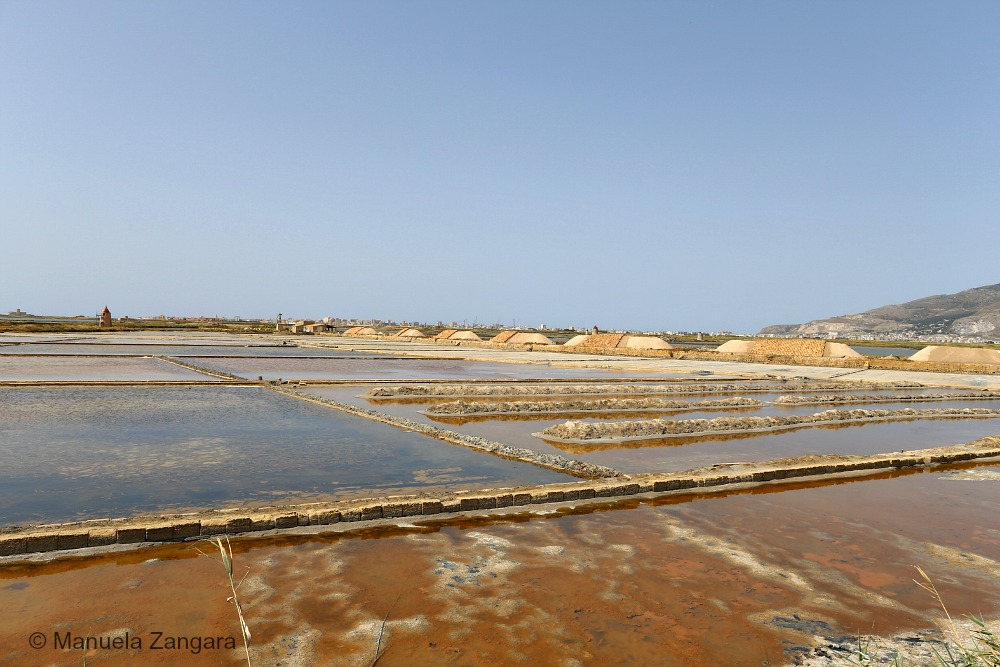
I love this area and you can often see flamingos too.
This area is also very famous for its amazing garlic.

There are also plenty of olive trees.
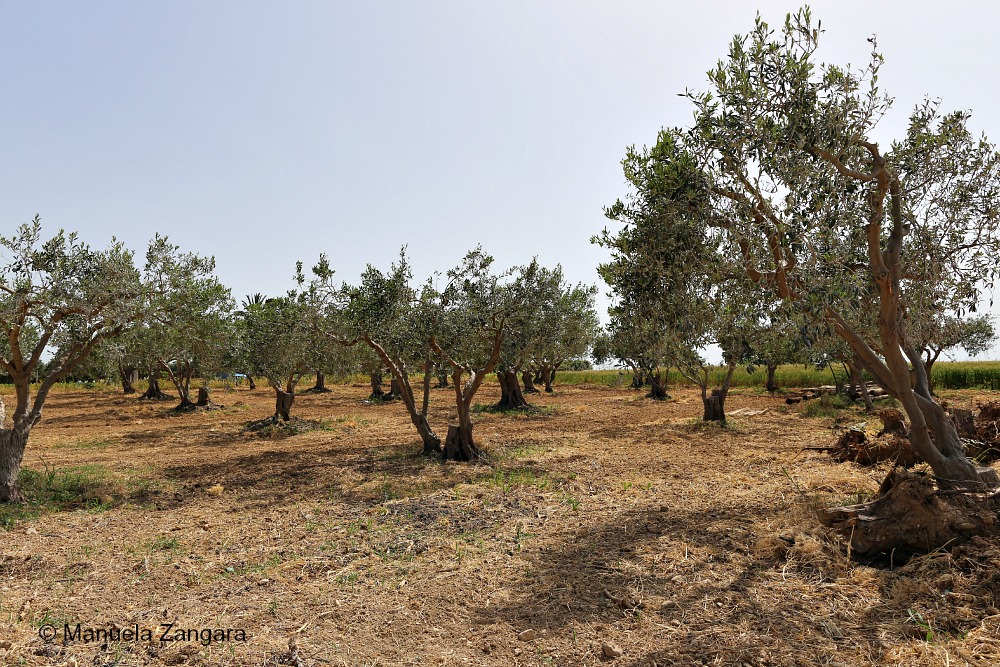
And wheat.

ERICE
The ancient town of Erice, at the top of the mountain that overlooks Trapani, can be reached by car along winding roads, or by cablecar in 20 minutes.


There are two castles that remain in the city: Pepoli Castle, which dates from Saracen times, and Venus Castle, dating from the Norman period, built on top of the ancient Temple of Venus, where Venus Ericina was worshipped. According to a legend, the temple was founded by Aeneas (son of Venus).

The main Church is called “Matrice” and it is so beautiful that is very popular for weddings!

I love walking around town and peep inside the beautiful yards.

You will find plenty of little shops that sell Sicilian handicraft and ceramics!

The panorama that you can see from Erice is breathtaking on all sides. On one side you can see Trapani (see the sickle shape?) and the salt pans.
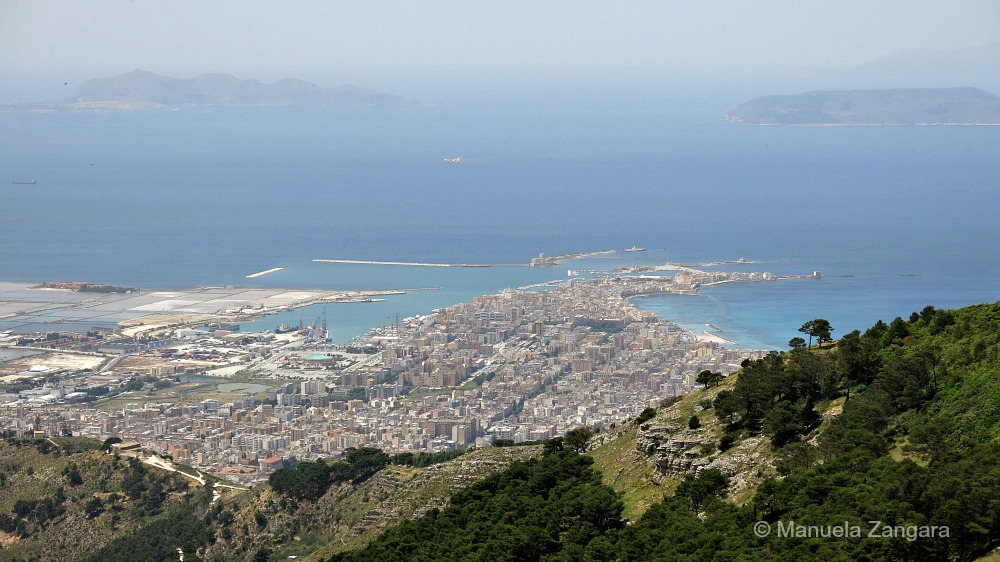

And on the other side you can see Mount Cofano and the little peninsula where the village of San Vito Lo Capo is (where we were staying).

Erice is a pretty little town with beautiful cobblestone roads and ancient churches and buildings.
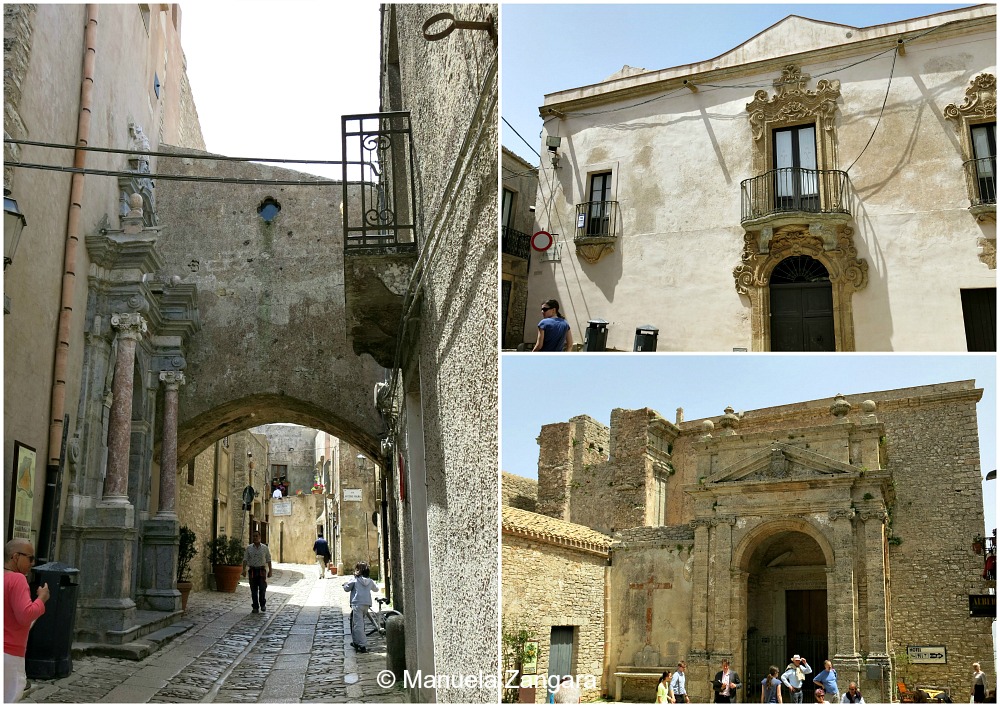

It is also very famous for its amazing almond sweets, more about it in the food section.


SEGESTA
Segesta is located 30 minutes by car from Trapani and it is another of my favourite sites. On a hill just outside the site of the ancient city of Segesta lies an unusually well preserved Doric temple.

The temple is a 5 minute walk up a hill from the parking area. It was built around 425 B.C but never finished.
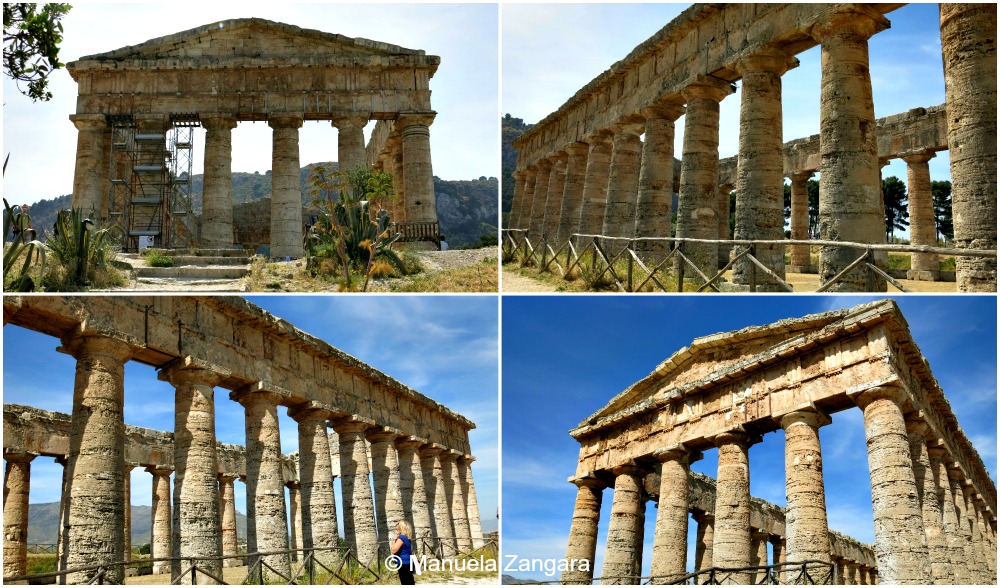
At the very top of the hill, you can see other historic sites such as an amphitheatre, an old Moorish castle and a former Greek town. This area is reachable on foot or by bus.
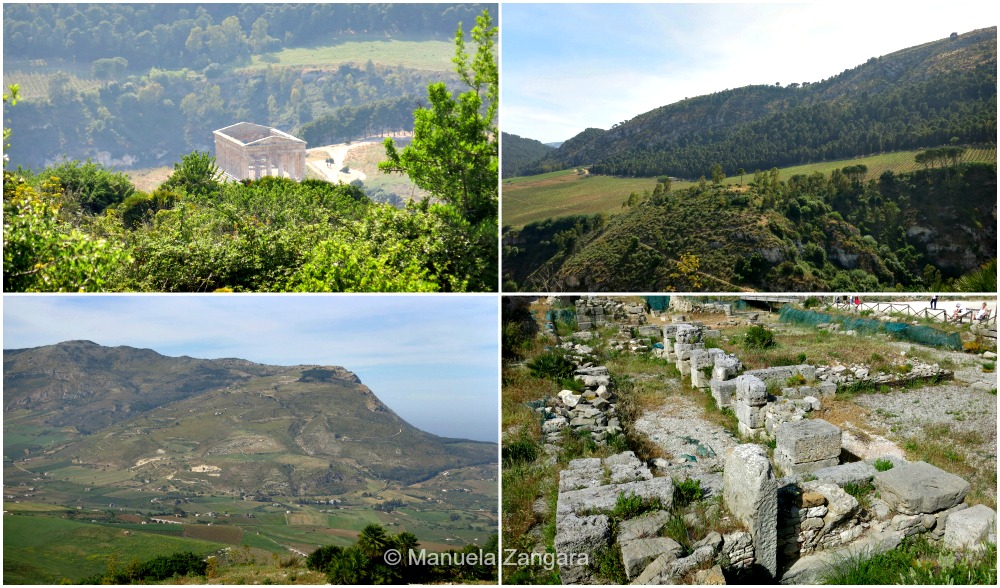

FOOD
Trapani is not as famous as Palermo for its food, but it does have some amazing dishes as well. Like all Sicilian food, it’s been influenced by all the different rulers the city had. Arab and North African influences are probably the strongest and you can see this in the extensive use of almonds (especially for the famous Erice sweets). Did you know that North Africa is just 80km across the water and considerably closer than the Italian mainland?
Fish is another local delicacy. Trapani and the Aegades Islands are well known for their tuna, which is superb. All parts of the tuna are eaten here, including the heart, milt and eggs.
This picture was taken by my grandfather during the mattanza – tuna fishing.
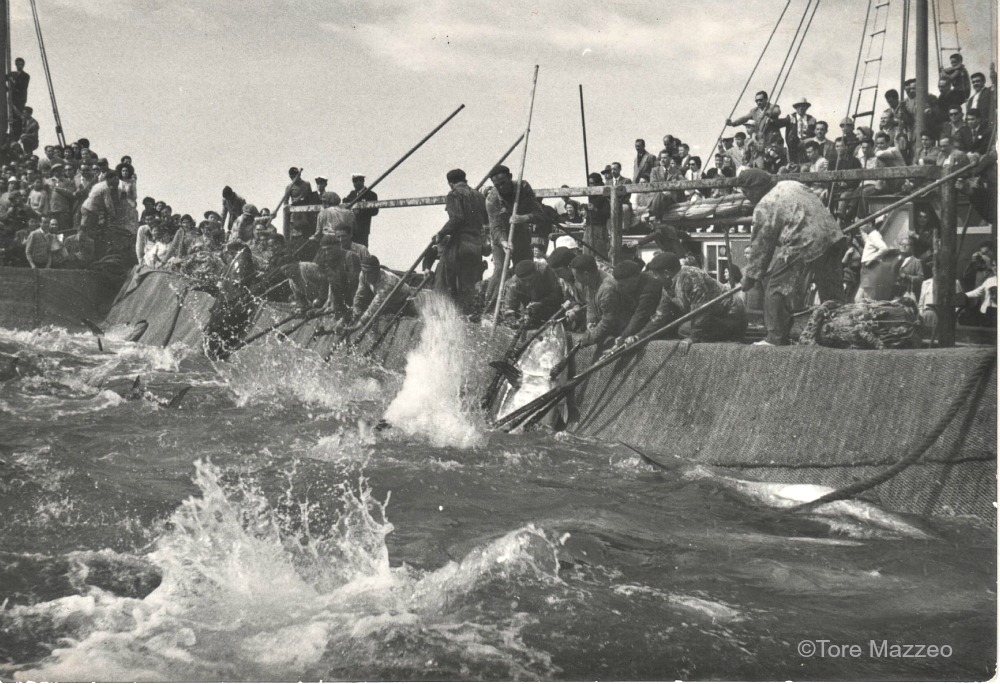
The most famous dish here is Fish Couscous, where coarse-grained couscous steamed with spices and onions is served with an intensely flavoured fish broth. It is to die for! I have my grandmother’s recipe on the blog, so check it out!
The second most famous dish is Pesto alla Trapanese: a mix of chopped almonds, garlic, basil and fresh cherry tomatoes, pounded together in a pestle and mortar. It is often served with Busiati (fat hand-rolled pasta), and eaten with a fistful of grated pecorino and fried eggplant. And now my mouth is watering!
Local cheeses are very good too. Tuma, for example, is a fresh cheese made of ewe’s milk obtained as one of the stages in the production of Pecorino cheese, which comes before adding salt and maturation.
Arancine are a must here too… and this time we had both meat filled ones and sausage filled ones!

And then, of course, there is the wine. Historically, Sicily is best known for its fortified sweet Marsala wine (which also hails from the Trapani region) and robust, dry table wines.
I will write a more detailed post about Sicilian food and all the amazing things we ate during our stay, so stay tuned!
RESOURCES ON MSM
SOME RECIPES FROM THE REGION OF SICILY:
STREET FOOD
Arancine
Panelle
Cazzilli/Crocche’ di patate
Rascature
Ravazzate
Spiedini
Crostini
Sfincione
Ham and Cheese Sicilian Brioches
PASTA
Spaghetti with home-made Tomato Sauce
Pasta con i Broccoli Arriminati
Baked Anelletti
Sedanini with Swordfish and Eggplant
Busiati with Pesto Trapanese and Fried Eggplant
Pasta con le Sarde alla Palermitana
Busiati with Herbs, Pistachios and Zucchini
OTHER MAINS
Beef Agglassato
Sarde a Beccafico
Gatto’ di Patate
Baked Swordfish Involtini
Eggplant Involtini
Fish Couscous
Pork Involtini alla Palermitana
Home-made Sicilian Pork Sausage with Fennel
Falsomagro
APPETISERS, SIDES & DRINKS
Sicilian Almond Milk
Bruschetta with Matarocco
Olive Schiacciate
Caponata
Cabbuci
Sweet and Sour Pumpkin
Eggplant Patties
DESSERTS
Cannoli
Cassata Siciliana
Buccellato
Martorana
Cassatelle Trapanesi
Biancomangiare with Citrus Salad
Cubbaita
Pesche Dolci alla Siciliana
Almond Cookies
Fig Cookies
Coffee Granita
Almond Parfait
Gelo di Melone
Genovesi
Browse through all my Sicilian recipes here.
TRAVEL IN ITALY:
Venice Guide – Italy
Milan Guide – Italy
Rome Guide – Italy
Palermo Guide – Italy
RESTAURANT REVIEWS – ITALY:
Nonna Betta – Rome
Da Enzo al 29 – Rome
Da Bucatino – Rome

HOW TO GET AROUND IN TRAPANI
The best way to get around Trapani is on foot! All the main attractions are in the centre, so I suggest you find a central accommodation and move around on foot.
Rent a car to drive around the surrounding area and visit Segesta, Marsala, the Salt Pans and San Vito Lo Capo.

HOW TO GET THERE
By Plane
The little Aeroporto di Trapani Birgi “Vincenzo Florio” (is about halfway between Trapani (18km) and Marsala (16km).
It is served almost exclusively by low-cost Ryanair flights, mostly from other cities in Italy and a few other European cities like London-Luton, Paris-Beauvais, Stockholm, Barcelona-Girona, Malta, Monaco, Frankfurt , Brussels.
It’s also handy as the place to catch Meridiana flights to the beautiful Italian island of Pantelleria.
To get to downtown Trapani from the airport, use AST buses. They run hourly buses.
Or you can land at Palermo’s Falcone-Borsellino Airport in Punta Raisi and catch a bus to Trapani. Though, be aware that there are few connections. If you land in Palermo, I strongly suggest you rent a car at the airport and drive to Trapani.
MAP
Note: Some of the photos are courtesy of my aunt Daniela. The black and white images are from my grandfather Tore Mazzeo’s archives.
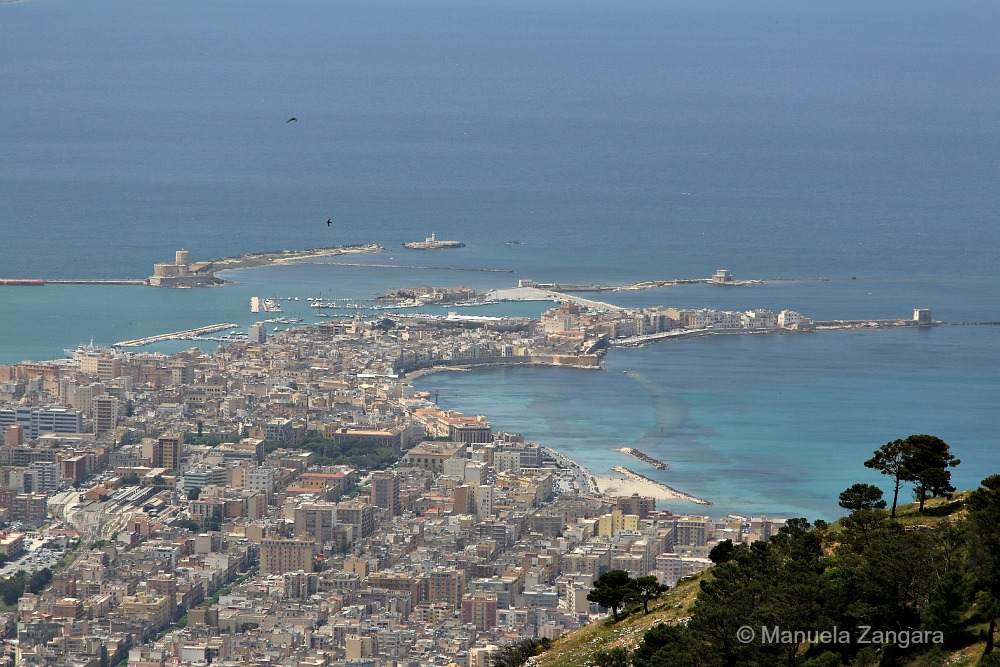




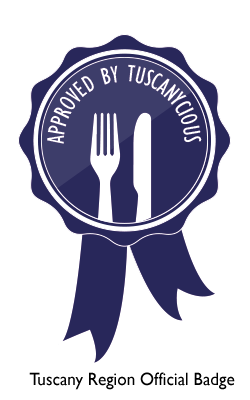












Hi Manu!
Your article about Trapani and surroundings is really interesting. I’m going there for holiday next week. I’m curious about one more fact. How are people in Trapani able to speak English? I’m a little bit worried about communication with them :).
Thank you,
Eva
Hi Eva!
Unfortunately not many people speak English… However, people who work with tourists will have some basic knowledge of English. But don’t worry, you will be fine! I am sure you will love the area. It is really beautiful!